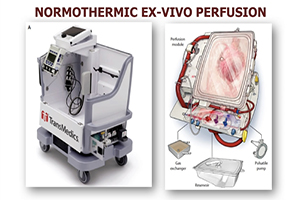Current approaches in retrieval and heart preservation
Abstract
Fifty years after the first successful heart transplantation, and despite multiple advances in the treatment of advanced acute and chronic heart failure, there is still no equivalent to heart transplantation as a longterm treatment for end-stage heart failure. Transplantation is, however, limited by the scarcity and quality of heart allografts. Donors are nowadays significantly older, particularly in European countries, and traumatic head injury as the cause of death has been replaced by intracerebral hemorrhage or hypoxic brain damage in the majority of cases. In addition, many donors have undergone extensive resuscitation efforts. Recipient characteristics have progressively changed too within the last couple of decades; recipients are older, often with comorbidities and nearly half of them are bridged to transplant with a wide variety of mechanical circulatory support devices. These developments have resulted in heart transplant surgery becoming significantly more challenging with longer more complex surgery and increased ischemia times for organs that were previously considered to be borderline or non-transplantable in many cases. To address this, several options have been explored within the last years and as a result, novel strategies have been developed and tested in order to optimize graft preservation and potentially increase the donor pool. The two notable developments are the ability to procure hearts from donors after circulatory death and the advent of ex-vivo perfusion of hearts. This technology has made the transplantation of so called extended criteria organs, including those from circulatory determined death (DCD) donors possible, and allow for out of body time of more than 12 hours in heart transplantation. In this review, we set out the basis of the current practices in organ procurement, and the opportunities for the future as demands for organ transplantation continue to increase.
Cover






